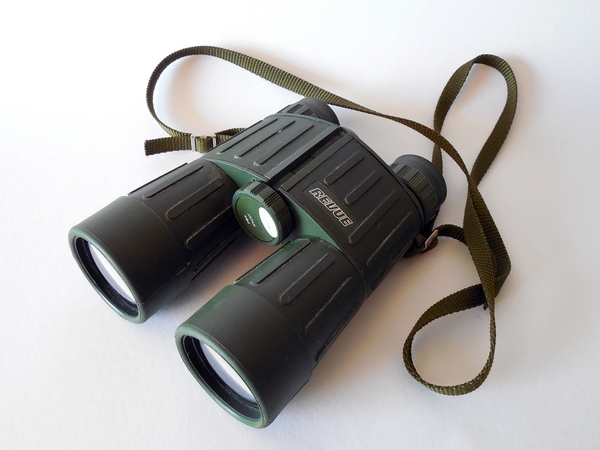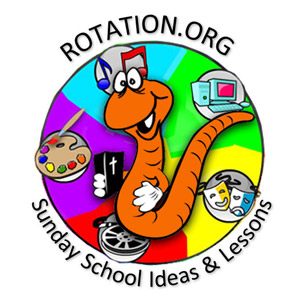Doubting Thomas Lesson Set
Art: create a picture where Jesus is there even when he cannot be seen.
Games: will learn the story and play a group game "Draw Your Own Conclusions" that demonstrates believing things we haven’t seen for ourselves.
Puppets: 4 skits and discussion questions
Video: view the video “He is Risen” (Nest)
Sensory Stations (see below): use the senses of sight, touch, taste, hearing, and smell to explore faith as Thomas did.
 Originally posted by the Kirk of Kildaire, these lessons have been updated by the Rotation.org Content Team.
Originally posted by the Kirk of Kildaire, these lessons have been updated by the Rotation.org Content Team.
Doubting Thomas
Sensory Stations Workshop
Editor Note: This lesson was originally posted as a Drama Workshop, but we've renamed it a Sensory Stations Workshop as it is more of an interactive demonstration.
Summary of Lesson Activities:
Students will use the senses of sight, touch, taste, hearing, and smell to explore faith as Thomas did.
Scripture Reference:
John 20:19-31
Memory Verse:
Faith makes us sure of what we hope for and gives us proof of what we cannot see. Hebrews 11:1 CEV
Concepts:
- Even though we have not seen Jesus, we can believe in him.
- It’s normal to have doubts, but you can ask for help.
- Jesus helps us to have faith.
Lesson Objectives:
- Children will hear how “doubting” Thomas sought the truth and how his faith was confirmed when he saw and touched Jesus.
- The class will use the senses of sight, touch, taste, hearing, and smell to explore faith as Thomas did.
Teacher preparation in advance:
- Practice reading the scripture expressively so you can read with feeling and emphasis as you would a story to a young child.
- Prepare a closing prayer.
- Print or write "Jesus is Alive" in very small print on a sheet of paper.
- Tape the “Jesus is Alive” paper on the wall. Have it folded up with tape so that the words can’t be seen until you are ready to show the kids.
- Tape a line on the floor in front of the “Jesus is Alive” paper. Far enough away that it can’t be read with naked eye, but close enough that it can be read with the binoculars.
- Make "Touch Boxes" or "Touch Bags" (see ideas below) and place an item inside each.
- Prepare "Smell Jars" (see ideas below)
- Prepare index cards. On each of the cards, write one of the five senses: Hear, See, Touch, Smell, Taste.
- Set up the stations.
Supply List
- Song: "I've Got No Doubt" by Robert C. Evans (The Donut Man) found on his CD titled = Donut Forget Bible Songs Vol. 2 (website www.donutman.com) (or on YouTube I've Got No Doubt)
- Sheet of paper with Jesus is alive in small print and tape

- Real binoculars (the toy ones don't work that well)
- "Touch Boxes" or "Touch Bags"
- Items for touch boxes or bags (glasses, a lock, nails, cross, a cardboard shaped hand with a hole in the middle, Bible, etc.)
- "Smell Jars"
- Grape juice, bread rolls and fish crackers
- Labeled index cards
"Touch Box" or "Touch Bag" Tips
- Empty tissue boxes
- Lunch bags
- Drawstring bags
- Gift bags or paper grocery bags (staple the opening smaller so a hand could get in but not too wide that you could see in.)
"Smell Jar" Ideas
- Empty spice containers
- Small plastic or glass food containers with one or two holes poked in the lid
* Gather smells on cotton swabs or cotton balls and place in the containers. Options include:
- spices
- essential oils
- vinegar
- perfume
- flavored gelatin powder
- soap
* Label the bottom of the containers with numbers or letters and keep a list for yourself so you can remember what scent is in each jar.
Lesson Plan
Opening:
Greet the children and introduce yourself. Wear your nametag. Make sure the children are wearing name tags. If not, ask the shepherd to supply a temporary badge. Remember you are interacting with a different group of students each week who may not know you.
Explain the purpose of the workshop.
Say: Thomas is often called “doubting Thomas” because he said he wouldn’t believe that Jesus had returned to the disciples after the resurrection until he saw and touched Jesus. Thomas wanted to know the truth and he looked for answers from Jesus who could answer his questions. Jesus can answer our questions too. Thomas used his senses, of touch, sight and hearing to have faith in Jesus. Today we will use our senses to learn more about Thomas, Jesus, and faith.
Explore the Story:
Scripture/Bible Story:
Help all children find John 20:10-31 in their Bibles. Read the scripture. (Practice reading so you can read with feeling and emphasis as you would a story to a young child.) To liven things up you may even dress as Thomas or have a “guest Thomas” (husband or older child).
Exploration:
This workshop will be set up in five stations (hearing, seeing, touching, smelling, and tasting).
Say: There are five stations. In each station we will explore our story and faith by using our senses. Thomas used his senses to answer his questions about Jesus.
1. "Hear" Station:
Say: We have already used our sense of hearing when we listened to the story of Thomas and we use our sense of hearing when we listen to God’s word as spoken by our teachers, ministers, and parents.
Play "I've Got No Doubt" once or twice so that children can catch on to the tune. Try to sing the chorus together. Ask children if they can think of examples of hearing God’s word
2. "See" Station:
Ask: What would you do if you woke up one winter morning and someone told you it was a snow day?
Say: Most everyone would be compelled to verify this statement by running to the window to see the snow for themselves! Seeing can make our faith stronger.
For this station, tape a piece of paper on the wall that has the words "Jesus is alive" written in very tiny font. Ask kids to stay behind a line and tell you what it says. The kids should not be able to read anything. Then give the kids a pair of binoculars (you can get several cheap kids kind). They should be able to read the words with the BIBLE binoculars.
Say: Binoculars are like the Bible. We use our sense of sight to read the Bible and the Bible in turn helps us see the truth about God’s love for us.
3. "Touch" Station:
Say: Thomas wanted to touch Jesus to see if it was really Him. He touched Jesus’ skin, robes and wounds.
For this station have several items that Thomas may have felt or that we use to strengthen our faith placed in a bag or box with a hole large enough to put your hand in. These items may include but are not limited to : cloth for Jesus’ robes, wood for the cross Jesus was nailed to, nail (large not too sharp) that nailed Jesus to the cross, rock that closed the tomb, Bible.
Allow each child to place his/her hand inside the box, find an item, and try to guess what it is without taking it out. After the child guesses he/she removes the item to see if the guess was correct and the class can discuss how the item may help us or Thomas strengthen our faith.
4. "Smell" Station:
Say: The sense of smell can remind us of things and feelings. What do you think of when you smell a pine tree (Christmas perhaps) or chlorine (a swimming pool) etc. Some smells make us feel warm and cozy (warm bread or cookies baking) other smells make us worried (the smell of smoke). What if faith had a smell. What would faith smell like? Let’s smell some things and you tell me what you think faith/belief might smell like and what doubt might smell like. Does having faith smell nice? Or nasty? Or maybe sweet? Is it a strong smell or very faint? What does doubt smell like? A smelly sneaker? Or an apple? Why or why not?
Pass the containers around the class. Ask kids to identify the smells. Invited them to sort the smells according to what they think belief/faith smells like. Allow then to share opinions.
5. "Taste" Station:
Say: Does eating cake remind you of your birthday? Does eating jelly beans remind you of Easter and turkey remind you of Thanksgiving? Jesus ate bread with his disciples often and used that time to teach them about God’s love. Jesus also ate with people who came to hear and see him. Remember when Jesus fed the 5000 people using a few loaves of bread and some fish? Let’s eat some bread together and think about Jesus’ love for us. Do you think Thomas and Jesus ate bread together when Jesus returned to the disciples? We'll share a snack just as Jesus and the disciples did.
Pass some rolls and fish crackers around as well as grape juice. Allow time for questions and discussion about today’s lesson. Reinforce that having questions or doubts is normal and that there are people ready to help us answer our questions (parents, teachers, ministers.)
Reflection:
While enjoying the snack, play this reflection game. Take turns picking out an index card and try to think of a way we can grow in faith by using this sense. (e.g. hearing: listening to a choir, sermon, etc.) Allow children to answer individually or as a group.
Closing:
Prayer: (suggestion) Dear God, Just like Thomas we sometimes have doubts or questions. Thank you for sending us Jesus, the church, and our parents to answer our questions. Amen
Tidy and Dismissal: Ask children to help tidy up. Place station materials in box to be used for next week.
A lesson from Kirk of Kildaire Presbyterian Church. Updated by a member of the Rotation.org Content Team.





